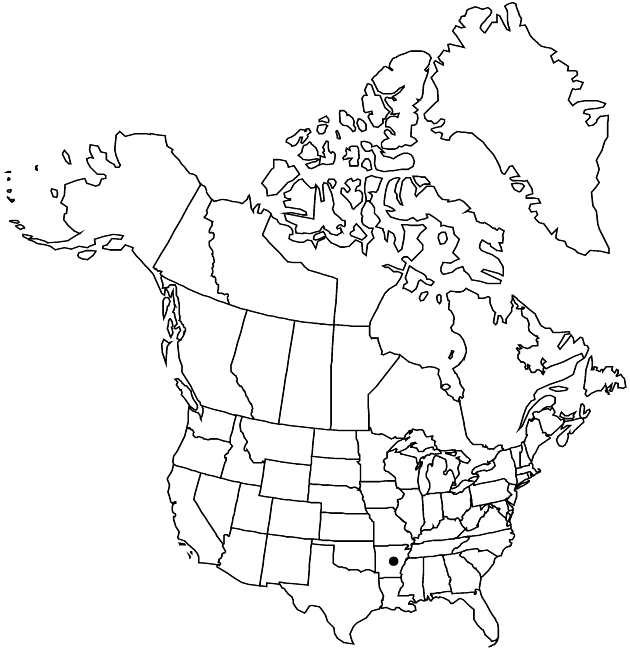Liatris compacta
Brittonia 1: 98. 1931.
Plants 22–50 cm. Corms globose to subglobose. Stems glabrous. Leaves: basal and proximal cauline 3–5-nerved (parallel veins evident, not persistent), elliptic-lanceolate, 80–150 (–180) × 3–10 (–12) mm (largest toward midstem), gradually or slightly reduced distally, glabrous, weakly glanddotted. Heads borne singly or (2–5) in loose, racemiform to spiciform arrays. Peduncles 3–25 mm (each head subtended by broad, foliaceous bracts longer than involucres). Involucres cylindro-campanulate, 12–17 × 8–14 mm. Phyllaries (loose to spreading) in 5–7 series, narrowly lanceolate (outer, usually longer than inner, foliaceous) to broadly oblong or narrowly oblong-lanceolate, usually glabrous, sometimes sparsely puberulent, margins without hyaline borders, apices acuminate to acute or cuspidate. Florets 18–25; corolla-tubes glabrous inside (lobes adaxially hispid). Cypselae 5.5–8 mm; pappi: lengths ± equaling corollas, bristles plumose.
Phenology: Flowering (May–)Jun–Sep.
Habitat: Rocky ridges, bluffs, hillsides, novaculite, sandstone, open woods, openings
Elevation: 100–600(–900) m
Discussion
Liatris compacta is known from west-central Arkansas. It has been treated as a variety of L. squarrosa, to which it appears closely related (especially var. glabrata). In addition to morphologic differences, L. compacta is distinct in habitat and is geographically disjunct from its closest relatives (L. squarrosa vars. glabrata and squarrosa); it is sympatric with L. hirsuta, which apparently is separated by habitat. The bracts subtending the heads are foliaceous; the outermost phyllaries of L. squarrosa are relatively elongate and usually phyllary-like, not nearly so large as in L. compacta.
Liatris compacta, L. squarrosa, L. hirsuta, and L. cylindracea are closely similar and interrelated: the basal leaves are on relatively widely spaced nodes, usually wither before flowering, and lengthen distally into the more crowded (shorter internodes) cauline leaves. At least the basal and proximal cauline leaves are basally sheathing and strongly parallel-veined. All species of this group also have at least a tendency for cylindric involucres, and corolla lobes of all are densely hirsute on the adaxial faces. Intermediates and intergrades among L. squarrosa, L. hirsuta, and L. cylindracea are relatively common in areas of sympatry; identifications are correspondingly arbitrary.
Selected References
None.
Lower Taxa
"plumose" is not a number."fine" is not a number.
